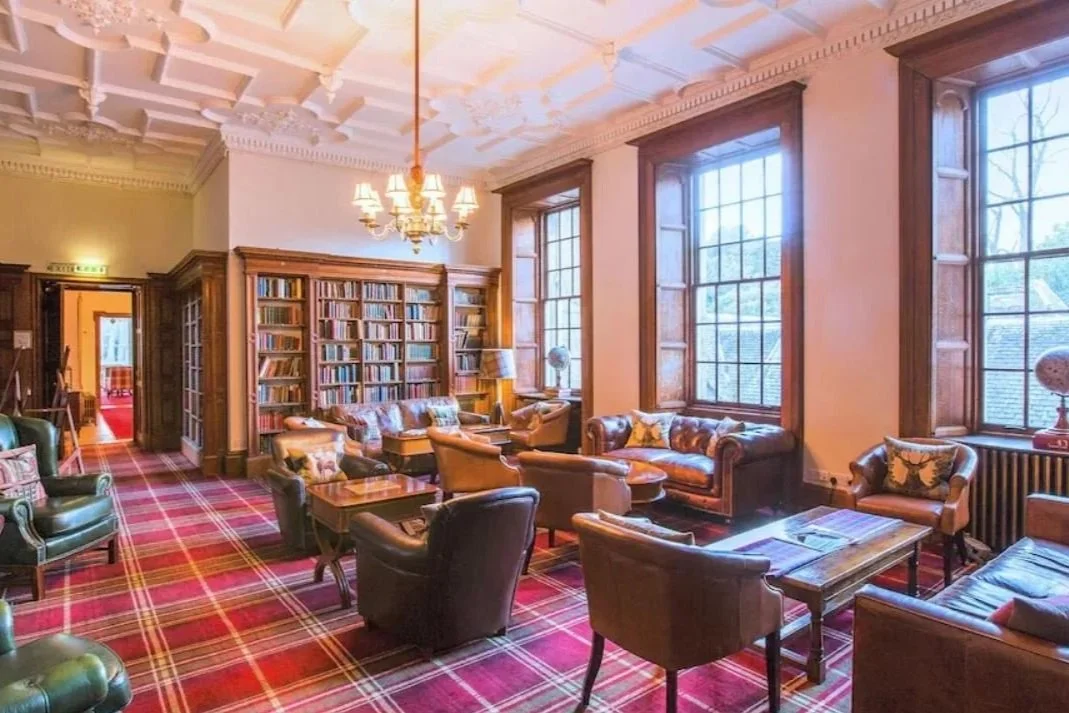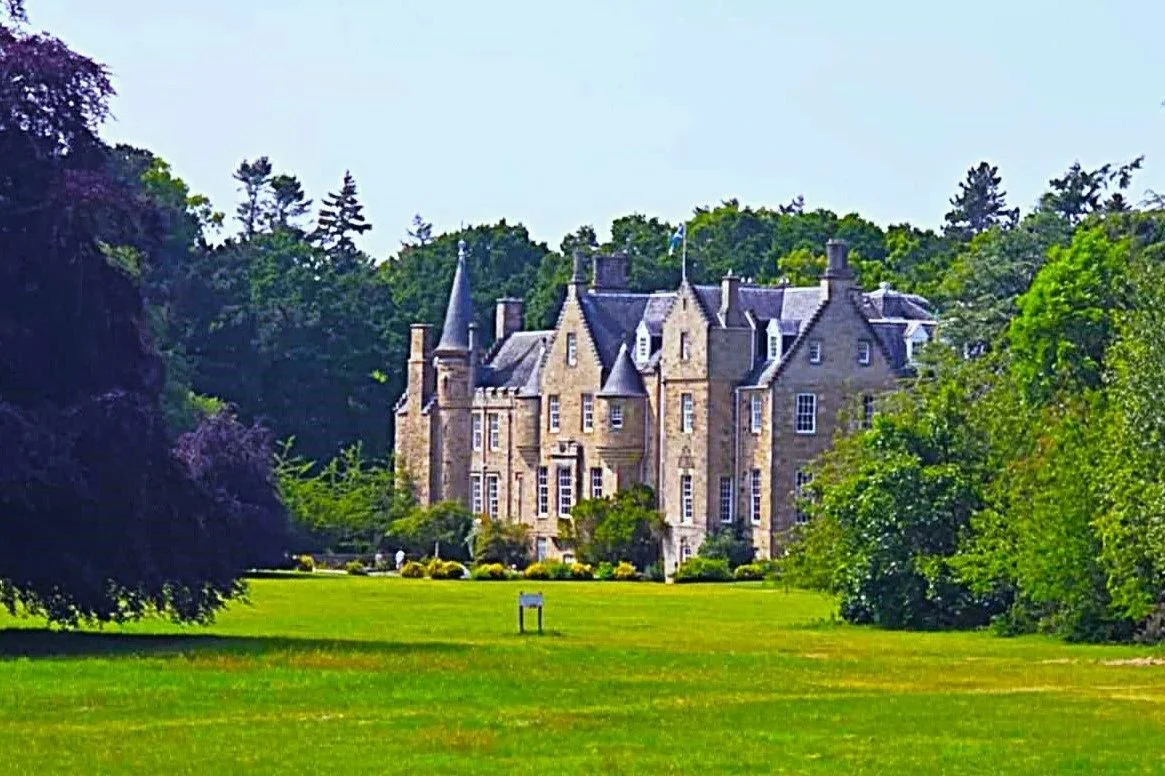Carberry Tower Mansion House is a Castle Hotel With Beautiful Landscapes and a Fascinating History - Scotland
There are many hotel properties in the British Isles that are renowned for their connections to history which provide cultured hospitality and unique amenities to guests. Some people have romantic notions of staying in an English country house like Highclere Castle which was used as a filming location for the popular television show “Downton Abbey.” Scotland is another place that is full of historic castles and manor houses which are open for public visits or used as hotels. Castles built in Scotland between the 13th and 17th centuries known as tower houses were generally designed with a central defensive tower and attached wings to deter incursions by rival clans or the English.
One exceptional hotel of this type with an interesting history the Carberry Tower Mansion House and Estate. Construction of the original Scottish tower house started in 1480 and was completed in 1500. It was expanded over the centuries several times and refurbished most recently in 2013 to include the facilities of a modern hotel. The hotel is now an award-winning “castle in the country” that is prized as a hotel destination for weddings, special events, and quiet getaways by vacationers from the British Isles and abroad.
It is self-described as “a place of intimate grandeur and one of the great Houses of Scotland which sits regally within forty acres of private estate parkland, just seven miles from Edinburgh, at the gateway to Scotland’s famous golf coast in beautiful East Lothian countryside.”
Rooms and Amenities
Carberry Tower Mansion House is a four-star castle hotel and estate that has many amenities associated with luxury properties but not lifestyle resort facilities such as a swimming pool, spa services, a golf course and tennis courts. Nevertheless, it provides all the essential things that discerning guests need to enjoy a country estate or to visit for lunch, dinner, or afternoon tea. Carberry Tower has been a gathering place for royalty and the nobility for centuries. Queen Elizabeth II often stayed there when visiting the estate during her childhood and later with her husband Prince Phillip. There are thirty rooms in the four-story main building of the hotel ranging from classic rooms and single rooms to larger family rooms, executive rooms, and luxurious suites. The rooms are well appointed with bright colors, modern bathrooms, and individual designs. In addition to staying in Carberry Tower and Mansion, guests can book a stay in the Mulberry Lodge,a separate private luxury accommodation with four bedrooms next door for longer stays or use by larger groups.
Other features of the hotel include unique common rooms to relax in such as the Library Club Lounge suitable for pre-dinner drinks and general relaxation, the Drawing Room, the Boar Bar for wine and spirits, and the Music Room. The main eatery, known as the Campaign Room, is open daily for lunch and dinner, with a broad menu that provides main courses, light bites, salads, and sides during the day and a relaxed and romantic setting for couples and families at dinner. The breakfast buffet is well stocked and a sumptuous afternoon tea is provided in rooms in the Mansion House and served in the Drawing Room.
The Carberry Tower Mansion House frequently serves as the location for corporate gatherings. There are conference rooms and break-out rooms suitable for meetings and receptions, a Banquet Pavilion, and the Glass House Building which offer additional space. These same spaces when coupled with the gardens, grounds, and extensive parkland of the estate make the venue a popular place for weddings and receptions to be held on site.
Grounds and Activities
One of the most attractive features of Carberry Tower is the grounds which include “tree-lined driveways, sweeping lawns, and landscaped walkways providing a superb space for outdoor activities such as walking, archery, falconry, and laser clays.” As you exit the rear of the mansion, you enter a recessed garden and then look out at a vast green meadow that rises up gradually to Carberry Hill, from which there are views of Edinburgh and the Firth of Forth waterway. Originally part of the estate, the woodlands and Carberry Hill were set aside as a parkland in the 1800s and are accessible by the public today. This entire area is home to abundant wildlife, thirty-five varieties of fir trees, and horse farms. Maps are available at the hotel along with signposts to direct guests along the footpaths and trails that pass through the woodlands and meadows up to Carberry Hill.
Historic Roots and Importance of Carberry Hill and Carberry Tower
The land on which the Carberry Tower Mansion House stands and the adjacent land now known as Carberry Hill were first mentioned in Scottish history in the 10th century when King David I of Scotland granted the area to the monks of the Dunfermline Abbey. The land was referred to in records written in Gaelic as “Caerbairin” and sometimes “Crebarrin” which translates to “Carberry” in English.
Centuries later in 1500, the Johnstone family built the original square tower house there. After that, other landowners and tenants controlled the area including Hugh Rigg, the King’s Advocate in Scotland during the 1540s. No one suspected, however, that Carberry Hill would become an important location for Scottish and English history in 1567.
Mary Stuart, Queen of Scots, became a queen as an infant when her father died. After her first husband was murdered in 1567, she married James Hepburn, the Earl of Bothwell. Some Scottish lords objected to Mary’s rule and in June 1567, Mary’s opponents and supporters fought the Battle of Carberry Hill. Facing imminent defeat, Mary surrendered to the Confederate English lords on Carberry Hill and abdicated her throne to her infant son James. Later escaping, she fled to England where she was held captive again for 19 years before being executed for treason against the English crown. Ironically, in 1603 her son James would become the king of England, Scotland and Ireland for a time.
High up on Carberry Hill deep in the woods, there is an area known as Queen Mary’s Mount. At that location there is a commemorative stone with an inscription that reads: “At this spot, Mary Queen of Scots after the escape of Bothwell mounted her horse and surrendered herself to the Confederate Lords 15 June 1567”. Local walkers, people interested in history, and the guests of Carberry Tower Manor House can reach the spot by hiking the uphill trail leading to a gated public area marked with a sign as the Carberry Woodland Car Park, or by following a path from the nearby road marked by a plague posted by The Marie Stuart Society.













